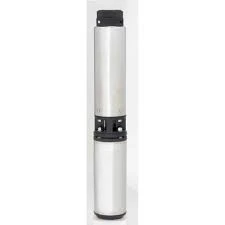Dec . 13, 2024 14:09 Back to list
submersible pump for underground water tank
Choosing the Right Submersible Pump for Your Underground Water Tank
Submersible pumps play a pivotal role in the management of underground water tanks, ensuring reliable water supply for various applications, from irrigation to domestic use. Selecting the appropriate submersible pump can significantly enhance efficiency and reliability, providing a steady flow of water when needed. In this article, we will explore the essential aspects of submersible pumps designed for underground water tanks, including their functionality, types, installation, and maintenance.
Understanding Submersible Pumps
A submersible pump is designed to operate while submerged underwater, typically within a well or an underground water tank. Unlike other types of pumps that remain above ground and draw water up, submersible pumps push water to the surface. This design not only saves energy but also prevents the possibility of cavitation, a condition that can cause considerable damage to pumps. They are usually sealed in a waterproof casing that protects the internal components from the surrounding water.
Advantages of Submersible Pumps
1. Efficiency Submersible pumps are highly efficient because they do not need to work against gravity. Being submerged allows them to provide higher pressure and better flow rates.
2. Space-Saving Since these pumps are installed underwater, they do not require additional space above ground, making them ideal for locations with limited space.
3. Reduced Noise Operating underwater significantly reduces the noise generated by the pump, making it favorable for residential applications.
4. Versatility Submersible pumps can handle a variety of liquids, from clean water to those containing debris and solids, depending on the design.
Types of Submersible Pumps
When selecting a submersible pump for your underground water tank, it is essential to understand the different types available
- Standard Submersible Pumps These are suitable for clean water applications and are commonly used in residential settings. They typically have a smaller motor capacity and can pump water efficiently.
- Wastewater Submersible Pumps Designed to handle liquids containing solids and debris, these pumps are ideal for sewage or drainage applications. They often feature a larger impeller and may have shredding capabilities.
- Deep Well Submersible Pumps These pumps are used for deeper installations, such as boreholes or deep wells
. They are designed to reach greater depths and can draw water from significant distances.submersible pump for underground water tank

Installation Considerations
Proper installation of a submersible pump is crucial to its longevity and performance. Here are some key considerations
1. Location The pump should be placed at the right depth to ensure a consistent water supply without drawing in sediment.
2. Power Supply Ensure that you have a reliable power source nearby to avoid operational interruptions. Confirm that the electrical connections are weatherproof.
3. Piping Use appropriate piping material that can withstand the pressure and conditions of the water and environment.
4. Float Switch Installing a float switch can automate the operation of the pump, allowing it to turn on and off based on water levels.
Maintenance Tips
Regular maintenance of submersible pumps is crucial to ensure optimal performance and longevity. Here are some maintenance tips
- Inspect for Wear Regularly check the pump for signs of wear or damage, particularly the impeller and motor components.
- Clean the Pump If the pump is exposed to debris, periodic cleaning can prevent clogs and maintain efficiency.
- Monitor Performance Keep an eye on the flow rate and pressure. Sudden changes can indicate issues that need immediate attention.
- Check the Electrical Connections Ensure that the electrical components are secure and not exposed to moisture.
Conclusion
A submersible pump can be a valuable investment for managing underground water tanks efficiently. By understanding the types available, installation requirements, and maintenance practices, you can ensure that your pump operates effectively to meet your water needs. Whether for residential, agricultural, or commercial use, choosing the right submersible pump will contribute to reliable water management and overall satisfaction. With the right selection and care, your submersible pump can serve you well for years to come.
-
Submersible Water Pump: The Efficient 'Power Pioneer' of the Underwater World
NewsJul.01,2025
-
Submersible Pond Pump: The Hidden Guardian of Water Landscape Ecology
NewsJul.01,2025
-
Stainless Well Pump: A Reliable and Durable Pumping Main Force
NewsJul.01,2025
-
Stainless Steel Submersible Pump: An Efficient and Versatile Tool for Underwater Operations
NewsJul.01,2025
-
Deep Well Submersible Pump: An Efficient 'Sucker' of Groundwater Sources
NewsJul.01,2025
-
Deep Water Well Pump: An Efficient 'Sucker' of Groundwater Sources
NewsJul.01,2025
-
 Submersible Water Pump: The Efficient 'Power Pioneer' of the Underwater WorldIn the field of hydraulic equipment, the Submersible Water Pump has become the core equipment for underwater operations and water resource transportation due to its unique design and excellent performance.Detail
Submersible Water Pump: The Efficient 'Power Pioneer' of the Underwater WorldIn the field of hydraulic equipment, the Submersible Water Pump has become the core equipment for underwater operations and water resource transportation due to its unique design and excellent performance.Detail -
 Submersible Pond Pump: The Hidden Guardian of Water Landscape EcologyIn courtyard landscapes, ecological ponds, and even small-scale water conservancy projects, there is a silent yet indispensable equipment - the Submersible Pond Pump.Detail
Submersible Pond Pump: The Hidden Guardian of Water Landscape EcologyIn courtyard landscapes, ecological ponds, and even small-scale water conservancy projects, there is a silent yet indispensable equipment - the Submersible Pond Pump.Detail -
 Stainless Well Pump: A Reliable and Durable Pumping Main ForceIn the field of water resource transportation, Stainless Well Pump has become the core equipment for various pumping scenarios with its excellent performance and reliable quality.Detail
Stainless Well Pump: A Reliable and Durable Pumping Main ForceIn the field of water resource transportation, Stainless Well Pump has become the core equipment for various pumping scenarios with its excellent performance and reliable quality.Detail
